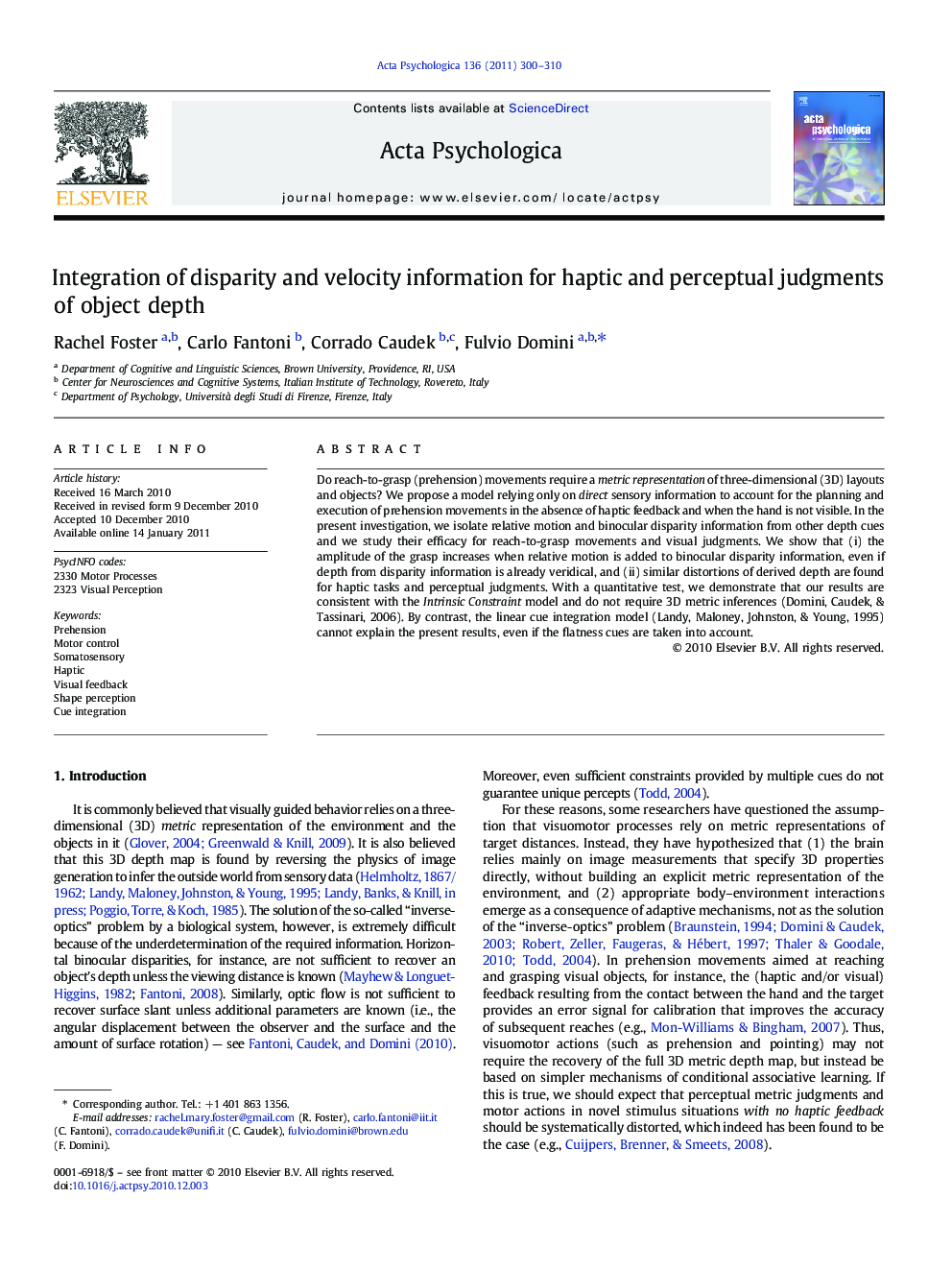| Article ID | Journal | Published Year | Pages | File Type |
|---|---|---|---|---|
| 920131 | Acta Psychologica | 2011 | 11 Pages |
Do reach-to-grasp (prehension) movements require a metric representation of three-dimensional (3D) layouts and objects? We propose a model relying only on direct sensory information to account for the planning and execution of prehension movements in the absence of haptic feedback and when the hand is not visible. In the present investigation, we isolate relative motion and binocular disparity information from other depth cues and we study their efficacy for reach-to-grasp movements and visual judgments. We show that (i) the amplitude of the grasp increases when relative motion is added to binocular disparity information, even if depth from disparity information is already veridical, and (ii) similar distortions of derived depth are found for haptic tasks and perceptual judgments. With a quantitative test, we demonstrate that our results are consistent with the Intrinsic Constraint model and do not require 3D metric inferences (Domini, Caudek, & Tassinari, 2006). By contrast, the linear cue integration model (Landy, Maloney, Johnston, & Young, 1995) cannot explain the present results, even if the flatness cues are taken into account.
Research Highlights► Disparity and motion integration for prehension movements without haptic feedback. ► Grasp amplitude increases when motion is added to disparity information. ► We model cue-integration according to Intrisic Constraint and linear cue combination. ► The Intrisic Constraint model accounts for grasp amplitude without haptic feedback.
